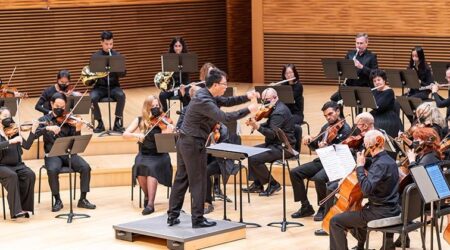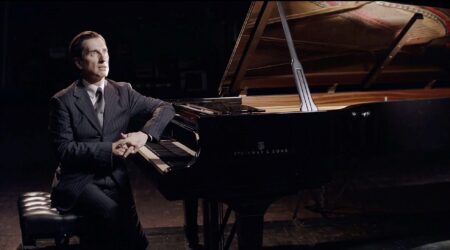Through the Lens: Germany Past, Present, and an Uncertain Future
A Country Shying Away from National Identity Sitting in a cosmopolitan five-story walkup in Berlin, Germany, my host, Jan, explained that even though the atrocities of World War II were seventy years behind, the German people are still atoning for the ruthless Nazi regime. From Holocaust Memorials to National Socialism Documentation Centers, Germany has not […]
A Country Shying Away from National Identity
 Sitting in a cosmopolitan five-story walkup in Berlin, Germany, my host, Jan, explained that even though the atrocities of World War II were seventy years behind, the German people are still atoning for the ruthless Nazi regime. From Holocaust Memorials to National Socialism Documentation Centers, Germany has not shied away from shame for the past. Interestingly, the first thing that jumped out at me during my stay was the fact that historical monuments related to the regime were referred to as memorials or documentation centers, rather than museums, perhaps to present history from a documentarian rather than artistic approach. Atoning for the past has seeped into modern-day discourse due to Germany’s fight against xenophobic isolationism, as the country spearheads the refugee crisis relief effort.
Sitting in a cosmopolitan five-story walkup in Berlin, Germany, my host, Jan, explained that even though the atrocities of World War II were seventy years behind, the German people are still atoning for the ruthless Nazi regime. From Holocaust Memorials to National Socialism Documentation Centers, Germany has not shied away from shame for the past. Interestingly, the first thing that jumped out at me during my stay was the fact that historical monuments related to the regime were referred to as memorials or documentation centers, rather than museums, perhaps to present history from a documentarian rather than artistic approach. Atoning for the past has seeped into modern-day discourse due to Germany’s fight against xenophobic isolationism, as the country spearheads the refugee crisis relief effort.
Walking along Potsdamer Platz, a main thoroughfare in Berlin, Turkish cafes lined the streets. Walking into one such café, I heard a variety of languages spoken, from Turkish to German, Italian, and English; some tourists, but mostly locals. With racial tensions running high and increasing terrorist attacks all over the world, one would come to expect hostility, but what I encountered during my two-week stay in Germany was, for the most part, quite the opposite. Complete assimilation into one singular identity was replaced by, at least at first glance, cultural acceptance and heterogeneous living under the banner of German citizenship.
Walking up the stairs to my apartment, I was confronted by a Middle-Eastern delivery man in his twenties or early thirties, who spoke flawless German and accented English. “You don’t speak German?” he asked, before becoming visibly hostile. He gave me a half-hearted once over, and then told me that it was my presence, as a tourist, that is making his life in Germany difficult. He left me with the words, “because of you tourists, I can’t get an apartment. It’s too expensive. You don’t even speak German.” During my two weeks in Germany, this was the first and only time I felt unwelcome. However, this encounter led me to believe that conflict was still brewing under the surface of German stoicism, on both sides of the national identity debate.
The Perceived “New Fascist” Regime
 Near the Reichstag, the seat of the former German empire and now the symbolic location of the reunification of East and West Germany after the Cold War, two middle-aged men waved flags and spoke to a crowd of approximately twenty people. While their monologues were exclusively in German, the sign on the side of the shack that served as their movement’s makeshift headquarters, adorned with many flags including the now-defunct Soviet hammer and sickle, could be read clearly in a number of languages.
Near the Reichstag, the seat of the former German empire and now the symbolic location of the reunification of East and West Germany after the Cold War, two middle-aged men waved flags and spoke to a crowd of approximately twenty people. While their monologues were exclusively in German, the sign on the side of the shack that served as their movement’s makeshift headquarters, adorned with many flags including the now-defunct Soviet hammer and sickle, could be read clearly in a number of languages.
The two men pleaded for United States and Russian intervention in Germany to assist in the de-Nazification of the current government. It appeared as though these two men were ignoring the German government’s democratic policies, leadership in the fight for world peace, and the country’s being at the forefront of seeking basic human rights for refugees. The two protestors feared that the policies were all a front for a resurgent Nazism or some other extremist movement. Were these two men conflating the current democracy in the country with old National Socialist ideals? Were they afraid of an alternate “Fourth Reich,” this time at the hands of foreigners rather than ethnic Germans, or were they suffering from a bout of paranoid conspiratorial delusions?
While I didn’t get a chance to approach the two speakers, who were under police escort, I left Berlin hoping to see the two sides of the conflict interacting with one another rather than existing as individual groups.
Clashing Movements
Two hundred kilometers south of Berlin, the sleepy town of Dresden gave me my first glimpse of conflict, and even then, only on the walls of the Neuschtadt, or “new city.” At first glance, the city was far quieter than the vivid city described in Kurt Vonnegut’s Slaughterhouse Five. The Altschadt, “old city,” was filled with regal buildings and the classic cobblestone streets that line the stereotypical European town square. Crossing the bridge to the new city, less devastated by the Allied bombings of World War II than the Altschtadt, you see gritty, downtrodden buildings, the occasional open-air public urinal, and at times, graffiti posing as questionable street art replacing the regal architecture.
 In the alleyways of the new city, social justice warriors fight for graffiti-wall supremacy. Antifa, or anti-fascists, crossed out writings and artwork by PEGIDA members, or Patriotic Europeans Against the Islamization of the West. Restaurants expressed their allegiances, posting signs such as “Fuck Antifa” and “PEGIDA sympathizers unwelcome.” The two sides were engaged in a war of words, and yet not a single protestor was anywhere in sight. The city that is a frequent battleground for these two movements, with side-by-side rallies held as recently as this past May, was sound asleep in the middle of the day. People sat in hidden restaurants and dives, no black-bloc bandanas to be seen.
In the alleyways of the new city, social justice warriors fight for graffiti-wall supremacy. Antifa, or anti-fascists, crossed out writings and artwork by PEGIDA members, or Patriotic Europeans Against the Islamization of the West. Restaurants expressed their allegiances, posting signs such as “Fuck Antifa” and “PEGIDA sympathizers unwelcome.” The two sides were engaged in a war of words, and yet not a single protestor was anywhere in sight. The city that is a frequent battleground for these two movements, with side-by-side rallies held as recently as this past May, was sound asleep in the middle of the day. People sat in hidden restaurants and dives, no black-bloc bandanas to be seen.
While on this day there were no violent clashes or protests, the graffiti on the wall put my Berlin host’s words into perspective. Saying that the German people try to avoid a national identity simply didn’t cover the many aspects of the social turmoil in the country, as the German people struggle to find the balance between assimilating new cultures and losing the cultural references of the German people before and after the Nazi regime.
Ignorance of Current Times, or a Different Mentality on Life
According to the National Institute for Justice, the FBI defines terrorism as “the unlawful use of force or violence against persons or property to intimidate or coerce a government, the civilian population, or any segment thereof, in furtherance of political or social objectives.”
My two day sojourn to Munich provided a new take on living with terrorism. With attacks all over Europe, including a devastating attack in Munich proper during the Christmas Market attack in December of 2016, it is easy to understand why some citizens might in fact perpetuate the above definition, live in fear, or even choose not to travel. As anyone who watches the news can attest, and as I have learned in my time as a terrorism liaison officer for the San Francisco Police Department, extremists seek out populated areas and mass gatherings to inflict the most damage.
Sitting down near the Marienplatz, a main public square in the heart of Munich, I sensed no fear in the eyes and voices of the many Germans dressed in lederhosen and other traditional garb who gathered for Stadtgrundungsfest, the annual celebration of Munich’s founding. Speaking with numerous festival-goers, I learned that they were wary of terrorism, but not wary of foreigners. They would not let the attacks affect their daily lives, of which mass gatherings over a liter of beer were customary. Otherwise, said one German national sitting next to me, the extremists would be successful in destroying the German way of life. Not even the ceremonial cannon fire, at which I immediately jumped, dimmed the smiles of the costume-clad crowd.
After two weeks, I left Germany with a greater sense of the difficulties that lie ahead for the country; a country looking to maintain its history and heritage while being at the forefront of diversity, globalization, and sociopolitical discourse.
Ilya is not good at standing still. He enjoys long-haul flights to exotic unknowns, getting lost in bustling cities, navigating language barriers, and haggling for unique items.
Ilya is a graduate of the George Washington University in Washington D.C, where he received a master’s degree in Safety & Security studies.





